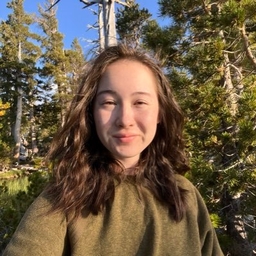
Katherine Irving
Producer and Journalist at Freelance
Editorial fellow @Sierra_Magazine. Freelance producer/journalist for @ScienceMagazine, @LiveScience, @SciShow, @BayNature, @MontereyHerald. CA, MN, AK. she/her
Articles
-
2 months ago |
sierraclub.org | Katherine Irving
In popular media, animal science often focuses on this question: How are animals like us? But when it comes to life underwater, biologist Volker Deecke tells author Amorina Kingdon, “by comparing to our own frames of reference, we are missing the interesting questions.”Deecke’s words guide Sing Like Fish: How Sound Rules Life Under Water (Crown, 2024). Human ears weren’t engineered to receive messages through liquid.
-
Feb 2, 2025 |
sierraclub.org | Katherine Irving
Peggy Stap spots a whale as soon as we leave the harbor. Its distinctive white plume of a spout shoots straight into the air, perfectly framed by a bright-blue sky and a calm, equally blue ocean. Stap has seen the animal thousands of times, and this whale, a humpback, is one of the most common in her home waters of Monterey Bay in California. But to her, the experience never gets any less special. “Humpback whales are my greatest love,” she says.
-
Dec 14, 2024 |
sierraclub.org | Katherine Irving
Long before the creation of the city of Oakland, salmon were spawning. Their journey would likely have taken them from the freshwater creeks they were born in out to the Pacific Ocean to mature and back again to reproduce, struggling up a wide channel into what was formerly a large saltwater lagoon. Each would have tried to swim through the lagoon and into the creeks above to spawn as their bodies slowly decayed.
-
Nov 24, 2024 |
livescience.com | Katherine Irving
Infectious diseases make up three of the ten slots in the World Health Organization's top 10 causes of death and account for millions of deaths annually across the globe. Despite these high numbers, however, diseases like COVID-19 and tuberculosis don't kill the majority of people they affect: COVID-19 kills an estimated 1% of those infected, based on totals reported by the World Health Organization (WHO), and tuberculosis kills fewer than 15%, according to WHO reports.
-
Oct 26, 2024 |
livescience.com | Katherine Irving
Mount Everest is the world's tallest mountain as measured from sea level. But will it hold that title forever? To answer this question, first we must understand how mountains form and how Mount Everest and the rest of the Himalayas got so tall. One way tall mountains form is when two tectonic plates collide. As one begins to subduct — or move under — the other, crust gets mushed around, upheaved, and turned into mountains.
Try JournoFinder For Free
Search and contact over 1M+ journalist profiles, browse 100M+ articles, and unlock powerful PR tools.
Start Your 7-Day Free Trial →X (formerly Twitter)
- Followers
- 216
- Tweets
- 70
- DMs Open
- No

RT @boron110: On this week's @ScienceMagazine Podcast, @ki_irving interviews #ClaireSpottiswoode about the fascinating cooperative relation…

RT @ScienceMagazine: How long can #AncientDNA survive? On this week's #SciencePodcast🎙️, @ki_irving and @love_dalen talk about the longevi…

I don’t post much on here anymore, but wanted to share a fascinating interview I had on @ScienceMagazine pod. @love_dalen explains ancient DNA, and how it could unlock the secrets of our past. Thanks to @mclean_ka for helping me produce this segment! https://t.co/Zv5D9bhJ0U

